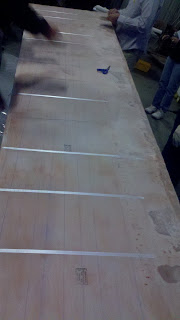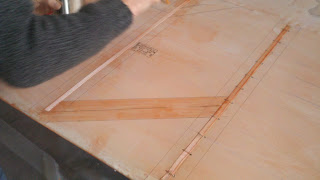Kevin A. Woolsey
Earlier this week, I was configuring Autodesk Vault to read properties from a title block in AutoCAD. Usually, this is pretty straight forward. Go through the steps like those on the Autodesk Wikihelp page, make sure the properties are mapped in Vault, verify the steps, and finally, serve and enjoy!
This day, I went through all the steps, I did my check, and...... (insert sound of needle dragging across a record)..... only some of the drawings would have their properties read in correctly. Others were inexplicably blank.
 |
| A "reenactment" of what we saw. I couldn't show customer data, so I had to create an example |
Only some? I'm standing there with the I.T. admin, and we're both puzzled. If something went wrong, they all would have failed, not just a some!?!
We recreate one of the properties displaying the problem. Maybe we made a mistake in mapping....
Nope. That was done right.
Maybe we used the wrong tag from AutoCAD? Maybe there are different tags in different drawings?
I jump into AutoCAD, open a problem file, and type "BATTMAN" at the command line. I start checking the Block Attribute Manager.
The attributes are correct. We didn't make a mistake there.
We repeat the process a few more times. It all seems right. Why? Why? WHY!?! We ask over and over.
We hadn't missed a step in Vault.
Finally, after returning to AutoCAD and opening the Block Attribute Manager again, my eyes land upon something I've never noticed before.
There are two copies of the block in AutoCAD. One is full of the pretty text we're trying to read into Vault. The other.... as barren and empty as Death Valley on the Summer Solstice.
 |
| Two block! In the end, there can only be one! |
Vault was picking up data from the empty block!
There was only one block required in the drawing. Once we deleted that, everything started running exactly as expected. We began breathing again!
I can't say you'll ever encounter this problem. It can easily be said that it's one in a million. But it also does prove no matter how much you test, there's always something unexpected waiting in the wings.
So keep your eyes and mind open. As Sherlock Holmes put it. "Eliminate all other factors, and the one which remains must be the truth.
P.S. Would you believe that this is the 300th blog post! Thanks for all those who've supported me!












